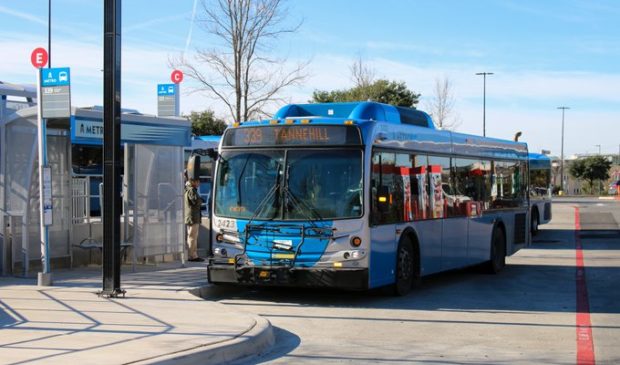Capital Metro considers in-house police force
Tuesday, May 4, 2021 by
Seth Smalley Last year, Capital Metropolitan Transportation Authority CEO Randy Clarke asked the American Public Transportation Association to convene a peer review of Capital Metro’s public safety program, one of a variety of services provided by APTA. The methodology of the review included interviews with board members, committee members, committee chairs, union members, and an acting chief of the Austin Police Department.
On April 26, the Capital Metro Board of Directors hosted a panel of APTA transportation executives to present the findings of that review. Among its other findings, the review made recommendations for Capital Metro’s security strategy going forward – namely the installation of an in-house patrol force for the transit agency.
The recommendation, according to the panel experts present at the board meeting, is based on the suggestions of a number of “relevant stakeholders.”
The experts at the meeting included Polly Hanson, senior director of security risk and emergency management with APTA, and Vera Bumpers, former chief of the Houston Metro Police Department. Paul MacMillan, retired chief of the Massachusetts Bay Transportation Authority police, also spoke and fielded questions from the board.
“There’s not really a standard blueprint for developing a transit security agency in this country,” MacMillan said. “Agencies started out using local police as their primary source of patrol and then morphed into establishing in-house police as a security force based on their expansion and internal needs.”
This is similar to what Capital Metro is currently considering, according to MacMillan.
“Support for an in-house public safety entity was a common theme indicated by all the folks we spoke with,” MacMillan said. “We would suggest now is the time to build an internal agency that can grow as your system expands.”
Another common theme in discussions with stakeholders was the desire to reevaluate the criteria used to develop municipal police forces. Typically cities use certain criteria to develop their policing models. However, as MacMillan noted, “the criteria may be reevaluated as agencies reengage with the communities based on current events.”
“Like all major policing reforms in the U.S. during the last century, the community-oriented policing model is based on several basic presumptions about how police departments work as social organizations operating within their community environments. While widely assumed as virtual truisms of modern policing, very little empirical research is available to confirm or document these premises. They function largely as obvious-and-untested articles of faith,” notes one study, authored by Edward Wells and David N. Falcone.
The report also suggested methods of determining leadership for the Capital Metro Department of Public Safety, including but not limited to seeking counsel from the Police Executive Research Forum, the International Association of Chiefs of Police and the National Organization of Black Law Enforcement Executives.
The Austin Monitor’s work is made possible by donations from the community. Though our reporting covers donors from time to time, we are careful to keep business and editorial efforts separate while maintaining transparency. A complete list of donors is available here, and our code of ethics is explained here.
You're a community leader
And we’re honored you look to us for serious, in-depth news. You know a strong community needs local and dedicated watchdog reporting. We’re here for you and that won’t change. Now will you take the powerful next step and support our nonprofit news organization?







